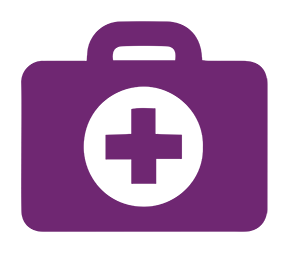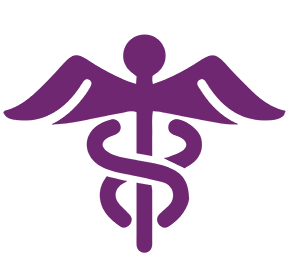Pulse Newsletters
Your source for the latest industry trends and drug information news.
Volume 2 | Issue 23
December 1, 2020
Contributors
Chief Author: Dana Ranallo, PharmD
Contributing Author: James Pufpaff, PharmD/MBA Candidate
Your source for the latest industry trends and drug information news.
Volume 2 | Issue 23
December 1, 2020
Contributors
Chief Author: Dana Ranallo, PharmD
Contributing Author: James Pufpaff, PharmD/MBA Candidate

On November 9, 2020, an emergency use authorization (EUA) for bamlanivimab intravenous injection was issued by the U.S. Food and Drug Administration (FDA) for the treatment of mild-to-moderate coronavirus disease 2019 (COVID-19), an illness caused by the SARS-CoV-2 virus. The EUA is for patients age 12 years or older, weighing at least 88 pounds who are at high risk for hospitalization or progression to severe COVID-19. Patients who become hospitalized, or require oxygen therapy in an outpatient setting, are no longer eligible for treatment with bamlanivimab. Bamlanivimab is a one-time intravenous injection that works by blocking the virus’ attachment and entry into human cells. The EUA comes as a result of data from a phase two clinical trial involving 465 nonhospitalized adults with mild to moderate COVID-19 who were randomized into four different groups: receiving either a 700-mg, 2,800-mg, or 7,000-mg dose of bamlanivimab, or placebo. The basis of the EUA came from the trial’s secondary endpoint: the rate of hospitalizations or emergency room visits 28 days after treatment. Patients who were treated with bamlanivimab had a lower rate of hospitalization and emergency room visits when compared to placebo (3% vs. 10%). This EUA is notably different from the recent FDA approval of Veklury® (remdesivir) for COVID-19 patients, which although for a similar patient population, was studied and approved specifically for hospitalized patients. This authorization comes as another development of the FDA’s Coronavirus Treatment Acceleration Program (CTAP) and its commitment to making the discovery and availability of treatments for COVID-19 a priority.

On October 22, 2020, Elsevier, a global informatics company, announced a collaboration with Novartis, a Swiss-based pharmaceutical company, to develop a novel prediction tool to mitigate safety risk and optimize drug selection during the drug development process. One of the main causes of failure in the late stages of drug development is adverse drug reactions (ADR). The CDC estimates that adverse drug reactions cause around 1.3 million emergency department visits per year in the United States alone and cost the U.S. health care system billions of dollars per year. ADRs are often the result of drugs acting on targets they were not intended to reach, which may lead to undesirable side effects and toxicity. The new tool would serve as a comprehensive resource to assess the risk of off-target drug activity during the earlier stages of the drug development process. Elsevier and Novartis plan to optimize drug selection by interpreting clinical data from marketed and withdrawn drugs to generate appropriate estimates for the difference between the usual effective dose and a dose that causes severe or life-threatening side effects, known as the safety margin. The current process for estimating the safety margin often requires researchers to individually evaluate reference literature and regulatory documents for safety and pharmacokinetic data. The proposed tool would use scientific data curation and other technological expertise to streamline the process. By providing early detection of potential drug safety concerns, the Research & Development process is expected to be more efficient.

On November 18, 2020, Pfizer Inc. and BioNTech SE announced results showing efficacy of their mRNA-based vaccine candidate, BNT162b2, against the SARS-CoV-2 virus. Over 43,000 participants to date have been enrolled in the Phase 3 clinical study comparing the efficacy of BNT162b2 to that of placebo in protecting participants without prior evidence of SARS-CoV-2 infection. The trial is being conducted in approximately 150 different sites with 42% of participants coming from ethnically diverse backgrounds. An independent Data Monitoring Committee (DMC) performed interim analysis on 170 confirmed cases of COVID-19 (162 observed in the placebo group and 8 in the vaccine group) which indicated that the vaccine, which has a 2-dose schedule, was shown to have an efficacy rate above 95% at 7 days after the second dose (28 days after treatment initiation). The most common side effects were fatigue (3.8%) and headache (2.0%), but no serious safety concerns were identified by the DMC. Pfizer and BioNTech also announced that they have obtained the necessary 2 months’ worth of safety data, meeting the FDA’s guidance for a potential Emergency Use Authorization (EUA). As a follow-up to the announcement, a request for EUA was submitted to the FDA on November 20, 2020, which could potentially allow the vaccine to be used in high-risk populations prior to the end of the year. Pfizer and BioNTech estimate that 50 million doses will be produced by the end of 2020 with another 1.3 billion being produced in 2021.

New Formulation: Sesquient™ (fosphenytoin sodium)
Intravenous injection approved for the treatment of a seizure disorder known as tonic-clonic status epilepticus, as well as prevention and treatment of seizures during neurosurgery, in adult patients. It may also be used in patients age 2 years and older who cannot take oral phenytoin, another seizure medication. [11/5/20 – SEDOR PHARMACEUTICALS LLC]
New Indication: SUTAB® (sodium sulfate/magnesium sulfate/potassium chloride)
Oral tablet form of an osmotic laxative indicated for colonoscopy preparation in adult patients [11/10/20 – Orphan – BRAINTREE LABS]

Banzel® (rufinamide)
Indication: Adjunctive treatment of seizure disorders associated with Lennox-Gastaut Syndrome in adults and pediatric patients age 1 year and older
Dosage Form/Strength: 40 MG/ML oral suspension
Average Wholesale Price (AWP): Generic = $10,046 | Brand = $10,575
Vascepa® (icosapent ethyl)
Indication: Reduction of triglyceride levels and cardiovascular risk
Dosage Form/Strength: 1 GM Dosage Form
Average Wholesale Price (AWP): Generic = $377 | Brand =$397